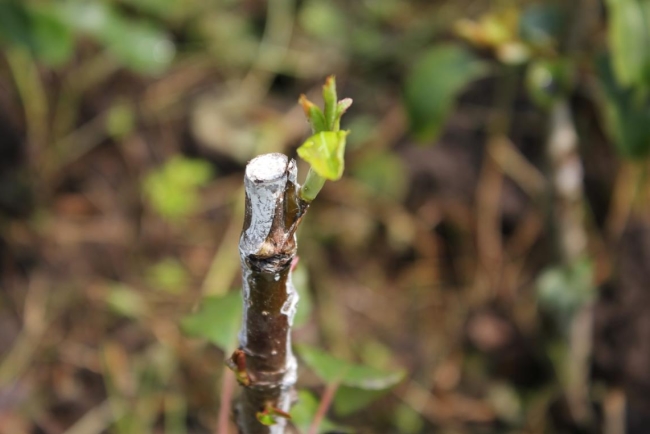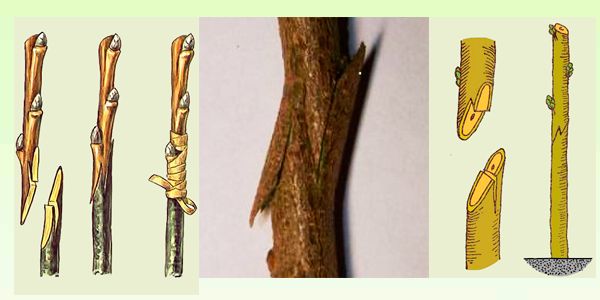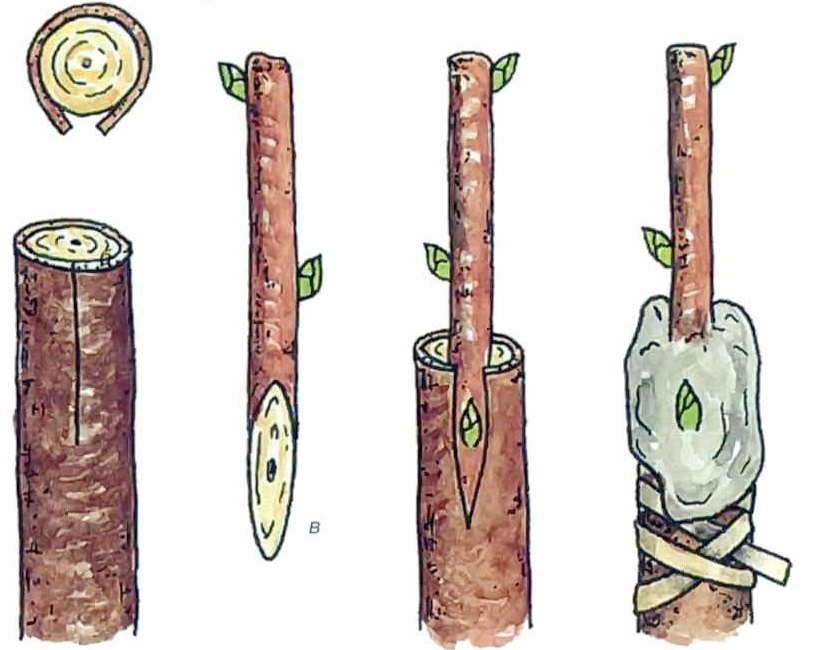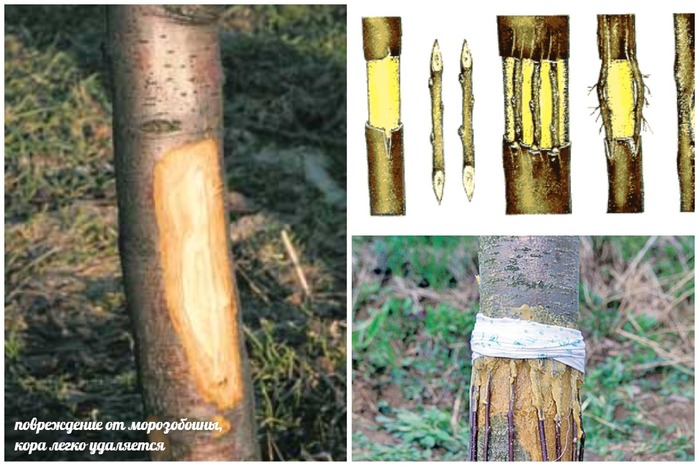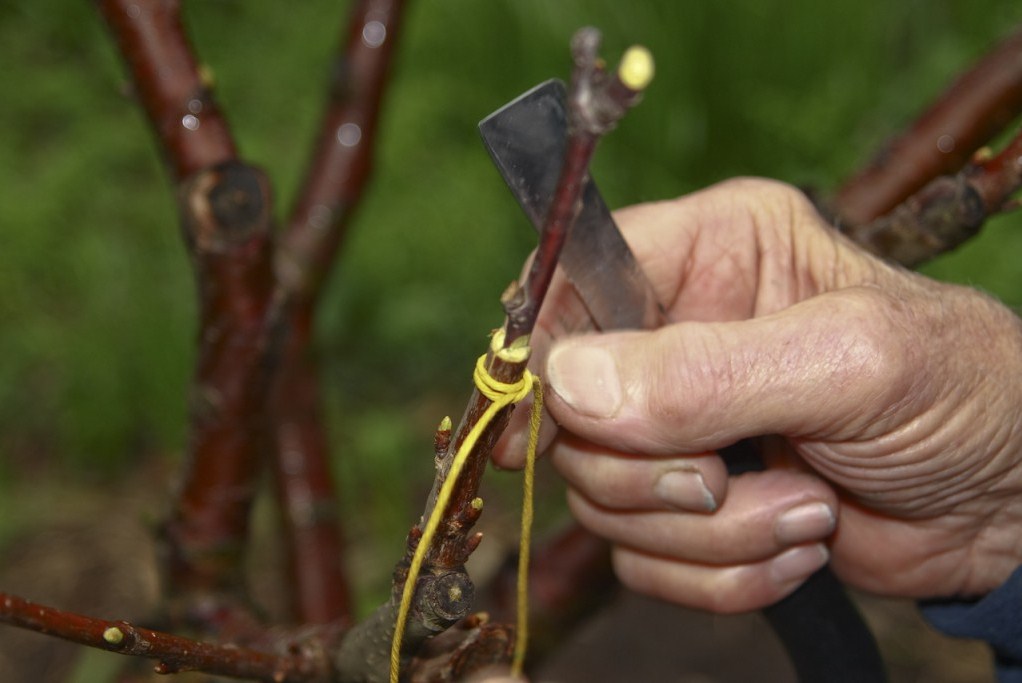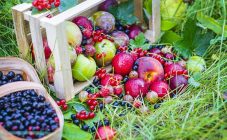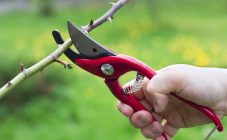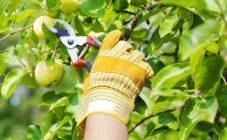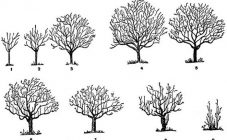Content:
A garden in the country is an opportunity to enjoy juicy and tasty fruits, as well as to significantly save money. When cultivating a garden, summer residents try to improve and multiply varieties by grafting or re-grafting. Many gardeners are wondering when is the best time to plant fruit trees.
Vaccination is appropriate if required:
- rejuvenate fruit trees;
- heal sunburn and rodent wounds;
- renovate the garden, but there is no possibility of uprooting old crops;
- preserve individual varieties;
- reduce the height of the tree;
- replace unsuitable varieties in terms of parameters;
- cultivate root shoots;
- increase frost resistance.
Vaccination dates in spring
Crops are inoculated practically during the year, however, manipulations in springtime are distinguished by productivity. The optimal period for grafting is associated with March. Its duration is until the end of May, when the intensive movement of sap in the rootstock ends. When performing the operation, rest is required for the cutting, otherwise the accretion will not bring success.
Vaccination falls on:
- end of March or early April for stone fruit trees: cherries, plums, apricots;
- beginning of April - the second decade of June for pome plants: quince, apple, pear.
Improved copulation
Differs in simplicity and efficiency. Used to multiply the variety. The operation is not performed until the buds appear on the branches.
Suitable for:
- cherry plums and cherries;
- apple trees and grapes;
- cherries and pears;
- plums.
For both the scion and the rootstock, the ideal diameter ranges from 0.7 to 1.5 cm.
When grafting plants, follow the sequence of actions:
- A cut is carried out on the rootstock and the cutting at an angle of 25-30 ° C, a longitudinal 1 cm undercut is made in the center.
- Attach the rootstock with the scion so that the tongues cling to one another, ensuring the coincidence of the cambial tissues (a thin green layer between the wood and bark).
- Wrap the grafted zone with electrical tape (with an adhesive strip on the outside), place a cellophane bag on top of the scion.
Bark grafting
Refers to the best way of grafting fruit crops, the age of which ranges from 3 to 10 years. Used to rejuvenate old trees. Choose a stock with soft bark. It is believed that the ideal time for grafting is the time for the juice to move - there is a good separation of the bark from the wood. Suitable for pome crops.
Vaccination algorithm:
- The stock is cut at 70 cm or 1 m from the ground, or from 20 to 40 cm from the trunk.
- The cut is cleaned with a disinfected knife, without touching the wood to prevent infection of the tree.
- From the bottom 10-15 cm of the cutting, cut 3-4 cm obliquely.
- A longitudinal 4 cm undercut is made on the stock, the bark is raised.
- A scion is placed in the "pocket" of the stock so that the cut of the cutting protrudes slightly above the end.
- Lubricate the bare areas with garden pitch, then tie the grafting area with electrical tape.
Cleft grafting
It is a fast method used for old trees. The signal for grafting into the cleavage is the arrival of the spring season before intensive sap flow, preferably at the stage of bud swelling.
Fit for:
- cherries and cherry plums;
- grapes and apple trees;
- plums and pears.
A rootstock with a diameter of 0.7 cm is optimal, this indicator for a scion varies from 0.7 to 1.5 cm.
The manipulations are carried out in the following order:
- The stock is cut 20-30 cm from the stem or soil, in the middle of the cut, a split is performed, 4-5 cm deep, a wedge is placed.
- You will need 2 scion with buds, where 2 cuts 3-5 cm long are made in a wedge-shaped manner.
- A scion is placed in the split along the edges of the hemp, the cambium layers of the stock and the cutting are adjusted.
- The wedge is pulled out of the split, the grafting area is wrapped with tape, the open areas are smeared with wax.
After 14 days, the cutting usually takes root. To check, they carefully look: the swelling of the kidneys, the formation of callus, the penetration of the growth from under the bandage indicate a successful manipulation.
Vaccination in the butt
It is used if the rootstock is thicker than the scion. The stock is cut into a stump, a longitudinal cut is made from the side. The scion and rootstock cuts have the same width and length.
Butt grafting is often done with tongues. Close up of the inoculation site after being tied with wax.
Side cut grafting
Fruit trees are grafted into the incision in the summer season (with a green scion directly from the tree) and in winter (in the root in the room). Perfect for the procedure - the period before active sap flow. Cuttings that are prepared in the fall are suitable.
The manipulation is characterized by speed and simplicity:
- Take a scion with 2-3 developed buds.
- At the bottom of the cutting, a cut is made obliquely: its length is equal to the diameter of the scion, which is multiplied by 3.
- Further, on the reverse side, another cut is made, the lower end of which is like a double-sided wedge.
- The top of the scion is cut 1 cm higher than the second bud.
- On the side, an incision is made on the rootstock. Place the knife at a 15-30 ° angle to the branch or the stem of the plant to cut the bark and wood.
- They put the scion in the cut, combine the cambium. Ideal when the cambial tissues of the stock and cuttings are adjacent.
- The grafted place is wrapped in foil.
- The top of the grafted cutting is smeared with wax.
If grafted into a lateral incision, this allows a change in the direction of shoot growth and control of crown formation. It is advisable to change the notch angle to the rootstock. The graft is turned to position the bud on the desired side.
Bridge grafting
The grafting method is used for lesions of the trunk or skeletal branch:
- bark eaten by hares or other rodents;
- sun burns;
- frosts;
- phyto-diseases due to improper planting;
- ring-shaped removal of bark from a tree.
Bridging Algorithm
If a ring-shaped damage to the bark is found, they try to stop the drying of the trees. Lubricate the affected area with garden putty, oil paint or natural drying oil. So the tree will stand until the sap begins to move.
- In the central lane, grafting with a bridge falls in May - active sap flow. First, they clean the affected area from the putty, wipe it with a damp cloth, and equalize the edges of the bark with a disinfected grafting knife. The manipulations are carried out carefully, avoiding damage to the wood.
- Scions are left in a room for warming for a day. The kidneys are removed. At the ends of the cutting, 3-4 cm cuts are made obliquely.
- Next, T-shaped cuts are made on the bark of the tree from the bottom and top of the bare part. Fold back the ends of the cut, place the end of the scion behind the bark.
It is easier to perform the procedure from the bottom of the tree. Having placed the scions in the cuts, they are tied tightly. The vertical arrangement of the bridges in the direction of branch growth facilitates tree sap flow.
Budding
Vaccination is done by eye or kidney. The budding method is used only in the spring. For grafting, an incision is made both on the scion and on the tree. Next, the handle is attached to the end and carefully wound. The operation is performed with young trees.
Vaccination tools and equipment
For grafting you will need tools and accessories:
- Pruner. It greatly simplifies the work. It is not necessary to adjust the sections when there is a lot of grafting material. The mechanism is easy for beginners to use. Do not present any difficulties for a 13 mm branch pruner. Ensures that the scion and rootstock will grow together quickly. The disadvantages of the tool include: the inability to cut off thick shoots, the cost of the mechanism.
- Garden knife for cutting thin branches. Easily handles branches with a thickness of 25 mm. However, for beginner gardeners who use the mechanism for the first time, it is difficult to wield it: physical strength and dexterity are required. With experience comes the ability to get very even cuts. The knife is suitable for small gardens and infrequent grafting operations. With constant use, you have to sharpen it all the time.
- Garden saw to cut thick shoots. A sickle-shaped device with a 35 cm blade is preferred.
- Copulation knife for separating bark from wood.
- Kidney grafting knife with convex-concave blade.
- Electrical tape to tie the grafting site.
- Flat screwdriver.
- Alcohol for disinfecting garden appliances.
- Garden var, a mixture of clay and mullein in a 1: 1 ratio, wax.
- Replaceable labels for marking cuttings. They are easy to find on sale. Some gardeners are not too lazy and will print at home.
Autumn grafting and its features
Autumn grafting of fruit trees falls in September. It is important that the cutting takes root before the onset of frost. In the spring, as well as in the fall, related crops are inoculated. For example, grafting of pome crops is carried out on pome crops.
It is advisable to cross a wild pear with small astringent fruits with an apple or a pear. An apple tree with unenviable fruits is combined with an apple tree with excellent taste or with a pear. Dwarf or wild cherries are combined with cherries or cherries with excellent taste and a suitable ripening period for berries.
Wild small-fruited apricot is combined with high quality plum or apricot graft.
Grafting of fruit trees in autumn involves the use of methods such as splitting, simple and improved copulation.
Experienced gardening tips
How to get a good vaccine?
To achieve a result when vaccinated, follow the rules:
- the best grafting material is annual shoots from 5-6 mm in thickness with 3-4 mature and nearby buds;
- 30-40 cm cuttings are harvested from a healthy fruiting tree;
- try to achieve optimal smoothness of the cut, when they connect the stock with the scion, do not allow the formation of voids;
- scions for grafting in spring or winter are prepared in autumn, but before the onset of frost: for the Moscow region or Rostov region, this period falls on the last decade of October or early November;
- cuttings are treated with wax, stored in a box with sawdust in the basement or at the bottom of the refrigerator wrapped in a wet napkin and a plastic bag;
- do not allow the cuts to dry out - the cuttings do not take root well;
- when working, use sharpened devices;
- cut off shoots in one motion;
- maintain a time interval of 2-3 minutes if the scion is inserted and tied;
- securely fix the graft zone to retain moisture by the plant;
- processed with a mixture of clay and mullein after tying;
- grafting crops from top to bottom: first in the middle, upper branches, then from below, so as not to damage the graft;
- grafting of different varieties on one seedling assumes the coincidence of fruit ripening dates;
- remove the harness when growing 4 cm of the shoot on the handle;
- do not often use the drilling method for fear of damaging the cambium;
- it is undesirable to carry out manipulations in the summer in heat or rain.
Compliance with the recommendations will allow the gardener to properly graft seedlings of crops and significantly increase the yield.
